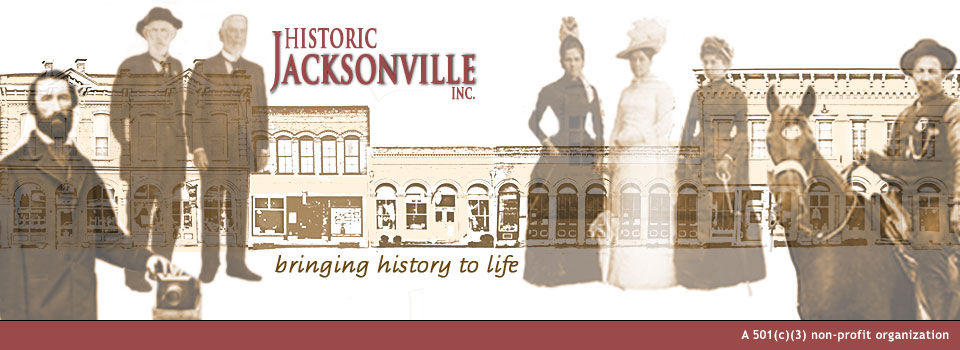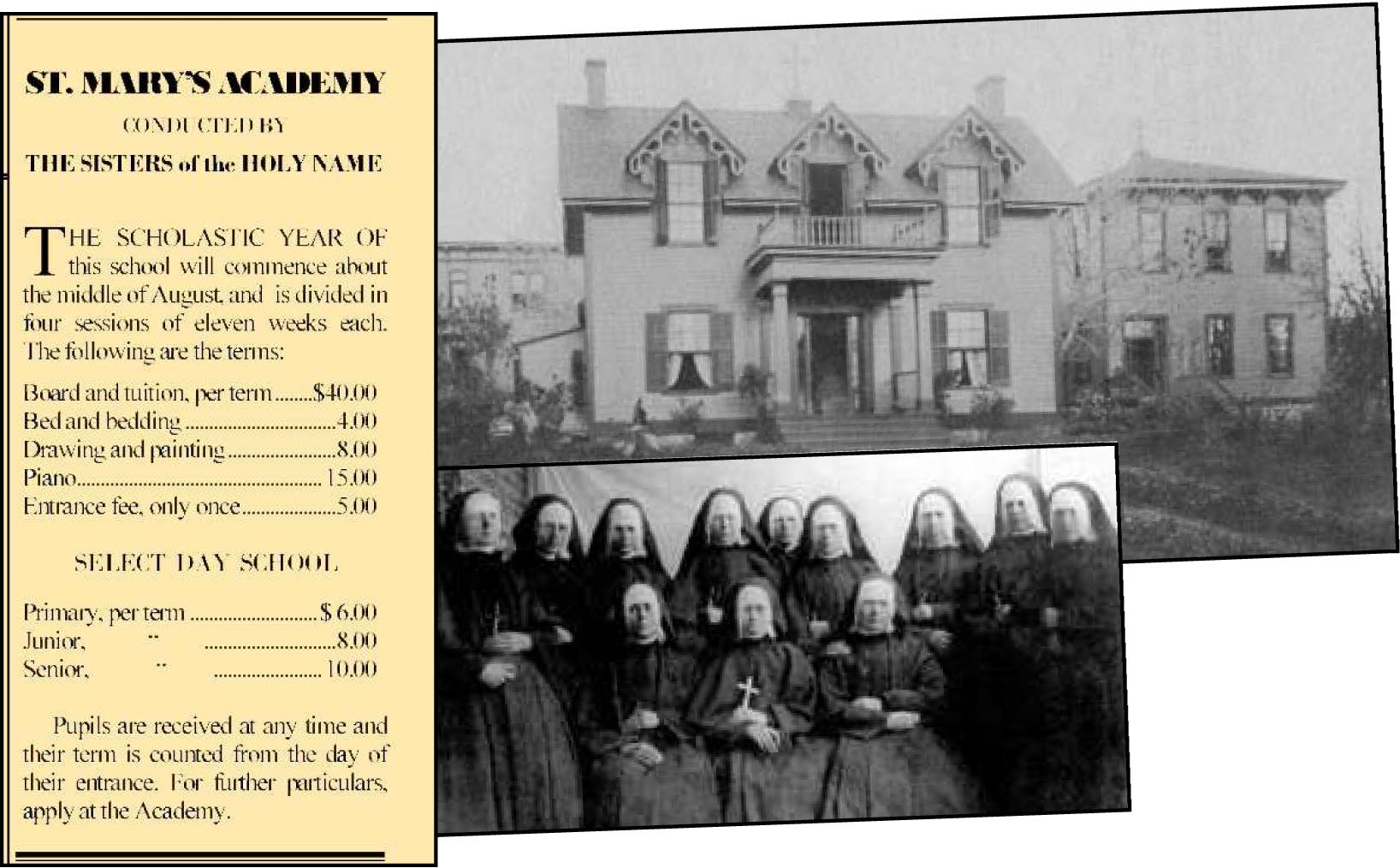Catholic Academy School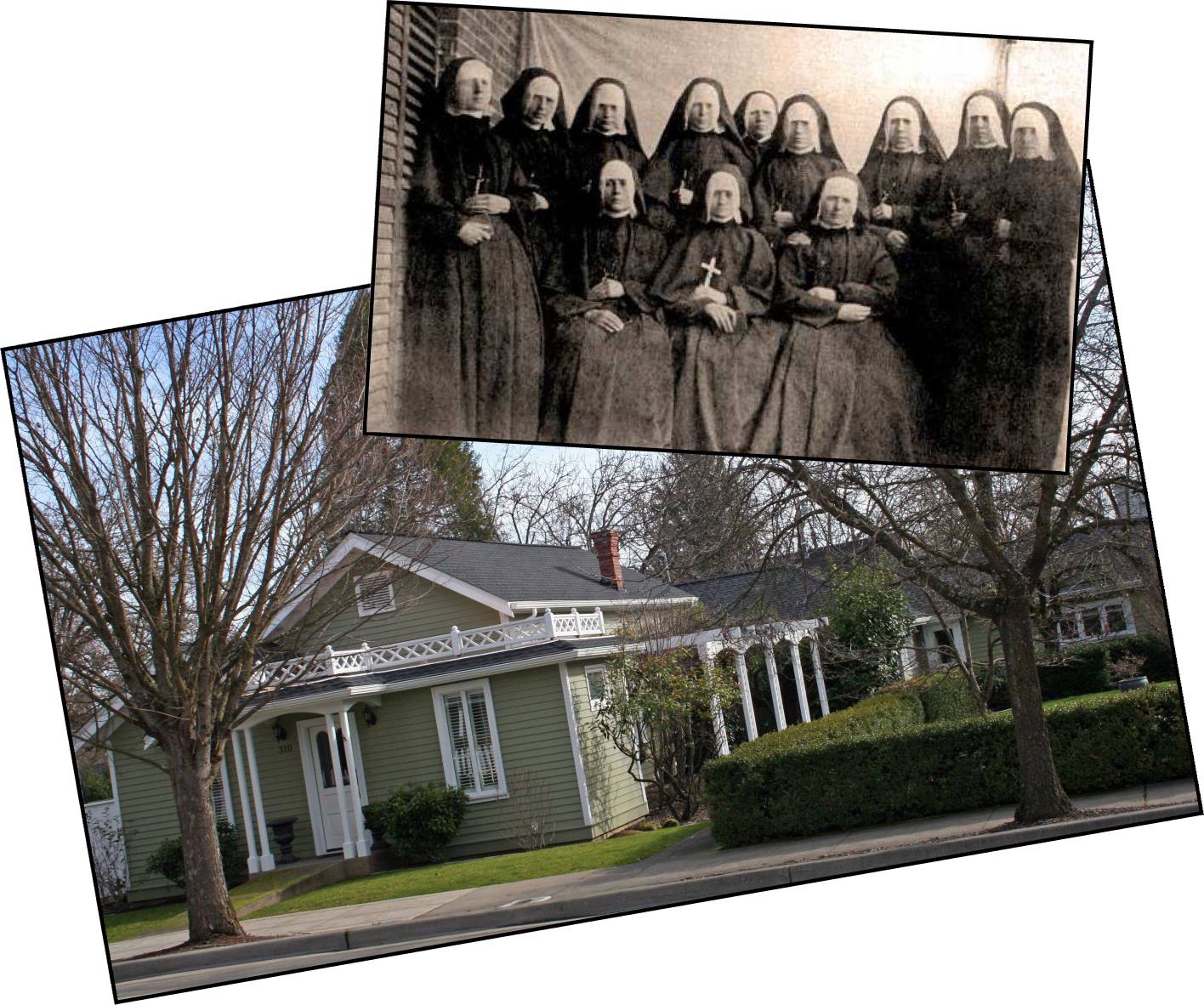
Before the Sisters of the Holy Name opened St. Mary’s Academy in 1865 in what is now Beekman Square, they briefly operated St. Joseph’s School for Boys in this building at 310 North 5th Street. They obtained the deed in 1864, the same year they had been brought to Jacksonville by Rev. Francis Xavier Blanchet, who for many years served as the parish priest of St. Joseph’s Catholic Church. The school was short lived, before being replaced by St. Mary’s. This structure, known as “the Catholic Academy School,” may have subsequently housed St. Mary’s students or the Catholic Sisters, since the Sisters retained ownership until 1873.
Instructions to Teachers – 1872
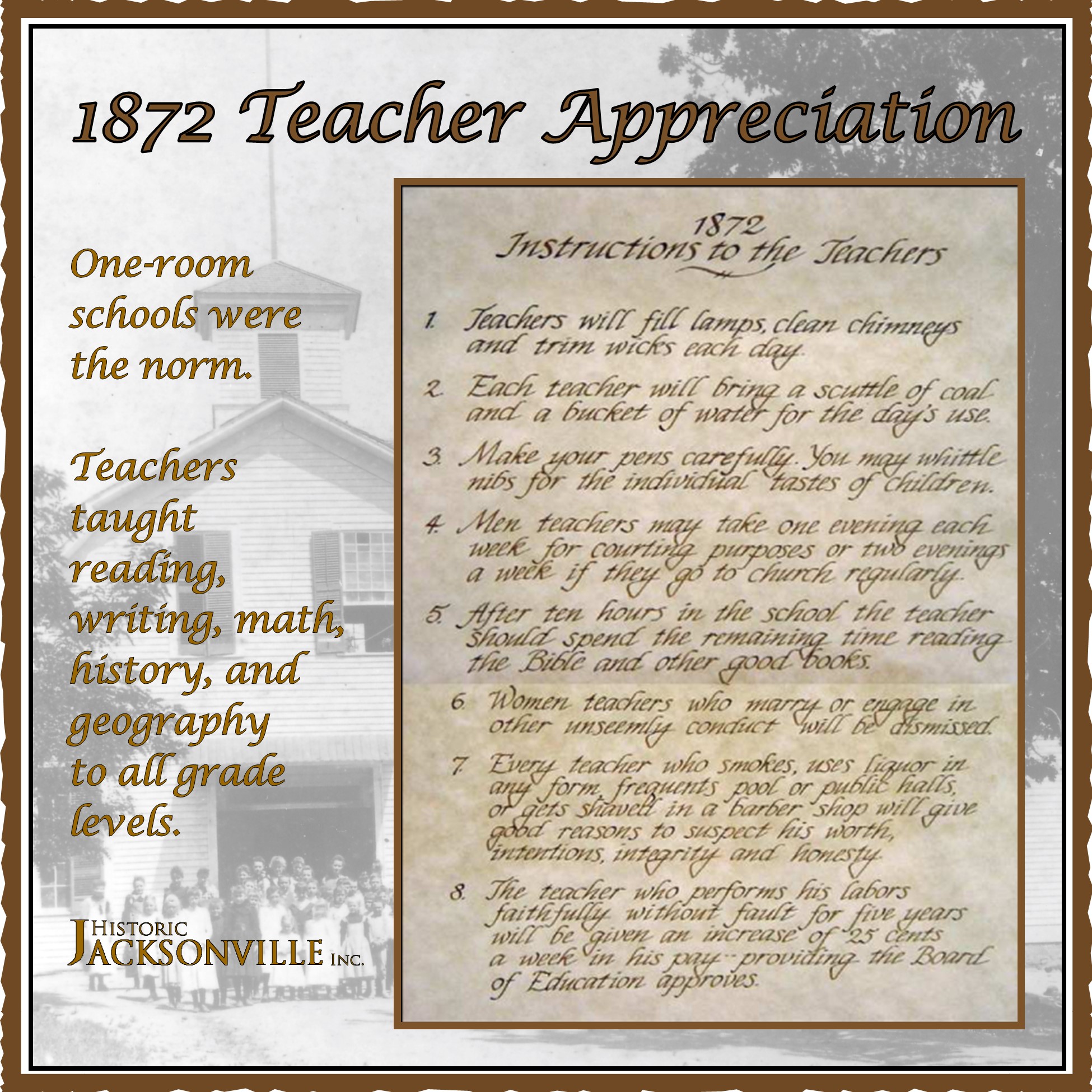
May is teacher appreciation month, but it’s questionable whether teachers were truly appreciated in the late 1800s—or at least whether female teachers were. Teaching was one of the few acceptable occupations that single, middle-class females in need of some income could pursue—and then only until they married. The work was hard and the standards high. Most schools of the time were 1-room and teachers were expected to instill reading, writing, math, history, and geography into all grade levels. Teachers were also required to provide coal for heating and water for drinking, to fill and clean the kerosene lamps, and to provide the students with sharpened quills for writing.
District Directors expected teachers to lead exemplary lives, to be single (if female), and to be regular church goers. If a male indulged in an intoxicating drink or a game of chance, it was cause for immediate dismissal (because, of course, a woman would never do that). But men were at least permitted one night a week for courting, two if they were regular church goers.
After 5 years, a teacher might receive a 25¢ raise. Tenure was unheard of. No wonder teacher turnover was high and few teachers stayed more than a year or two. So be grateful for today’s learning environment, even if it is virtual, and do take time to thank a teacher!
Jacksonville’s First School House
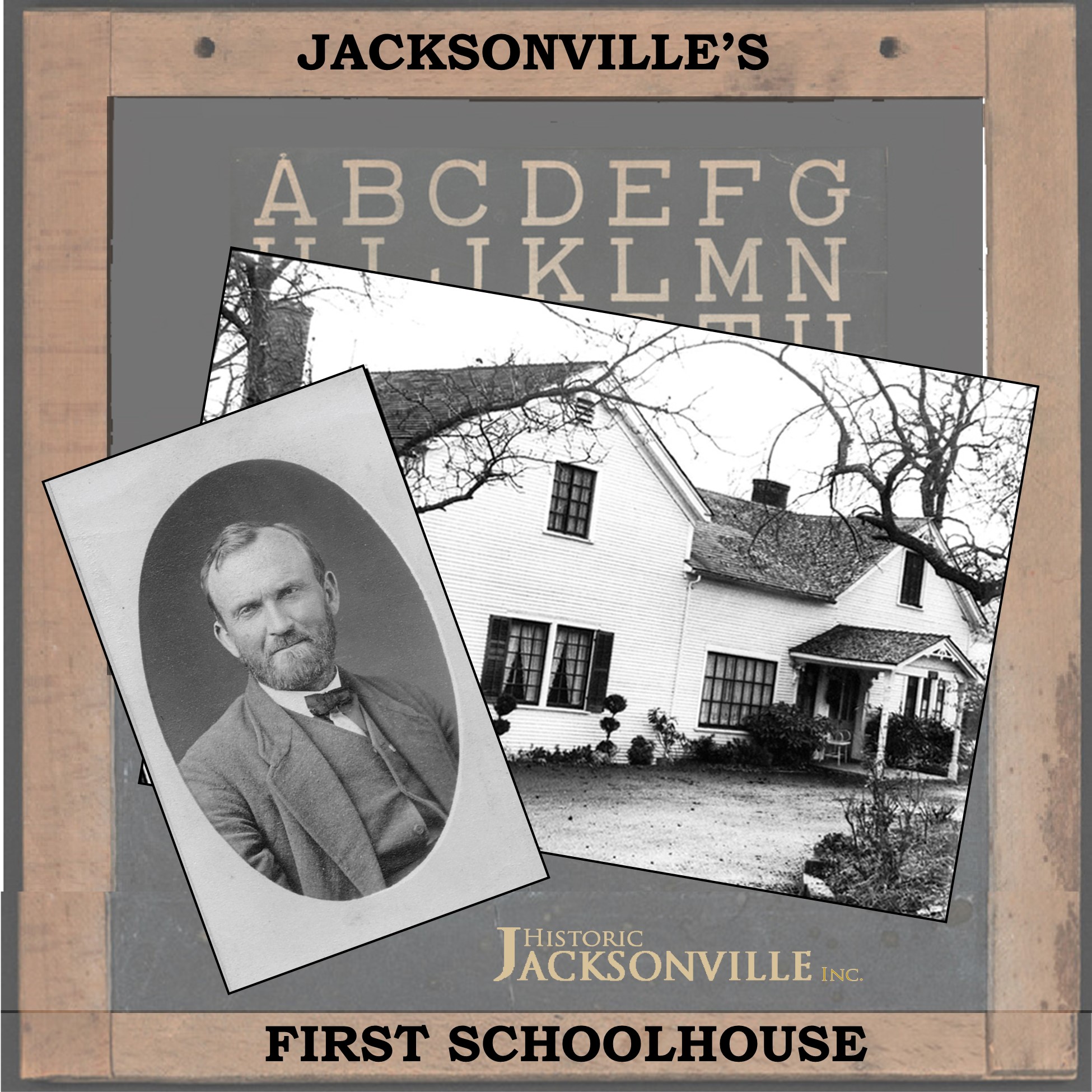
The oldest section of the house located at 560 North Oregon Street in Jacksonville has been described as the town’s first schoolhouse. But then it may NOT have been!
In diaries and memoirs, Reverend Fletcher Royal tells of renting a house in 1853 from Col. John Ross for $15 a month to “have room for a school and church purposes.” Winter and spring classes were conducted there. In the spring of 1854, Royal bought another house from a Thomas Pyle for $250. In the front room of this house, classes were taught in the summer and winter of 1854-55. The school was supported on a subscription and tuition basis by the townsmen and miners of the community. “Generous gifts of gold from the miners and tuition charges of from $5 to $8 a quarter sustained the school. Sixty students were enrolled the first year.” It was not until the spring of 1855 that the town levied $600 in taxes to construct a schoolhouse, but its precise location is unclear and it’s possible that the town chose to purchase the existing structure from Royal.
By 1866, the population had outgrown the original structure and a new tax was levied to purchase or lease a new schoolhouse on Bigham Knoll. Shortly after the new school opened, what was described as Jacksonville’s first schoolhouse was deeded to R. Sergeant Dunlap in payment for the $137 owed him for digging a well, building fences, constructing walks, etc. at the new school. The 1855 schoolhouse appears to have been moved to its current location at that time, becoming the initial portion of Dunlap’s home. But this was not the house rented from Ross. Was this the Pyle house, who knows? Either way, it’s a safe bet it was not Jacksonville’s 1853 school!
School House #2
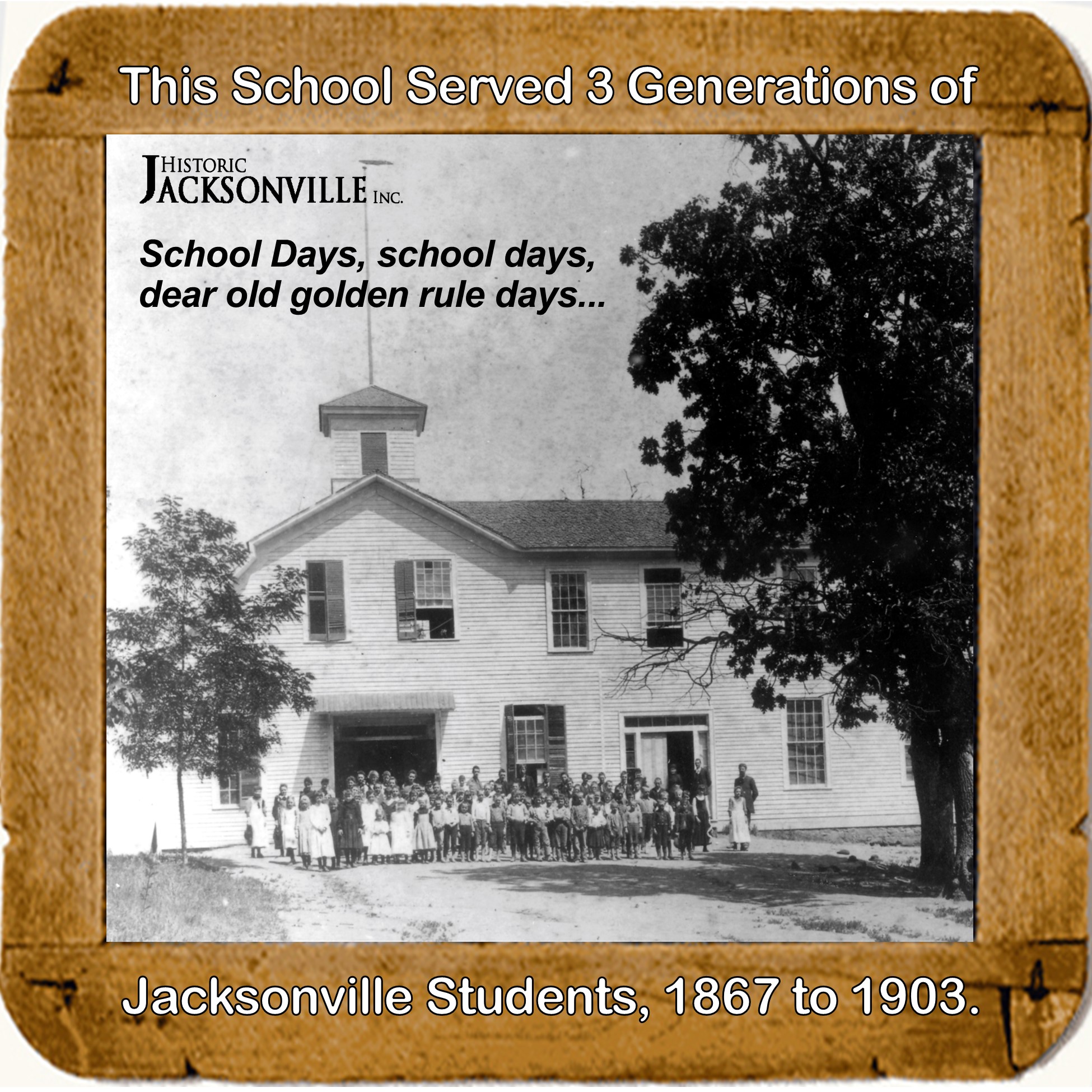
At the end of E Street in Jacksonville lies Bigham Knoll, the original 7-acre campus that was once home to Jackson County School District #1. In 1867, when the County’s first public school was deemed inadequate, the school district directors acquired this property and converted an existing two room house into a school building until local builders could erect a new 2-story frame and “weather boarded” school house. Students paid $5 per quarter in tuition until 1875, when the school levy was increased enough to do away with the tuition tax. A year later, the increased school enrollment necessitated enlargement of the building and an addition was completed “sufficiently large to accommodate all the pupils of the district.” This building served 3 generations of students for 36 years until it was destroyed by fire on January 25, 1903.
Schoolhouse #3
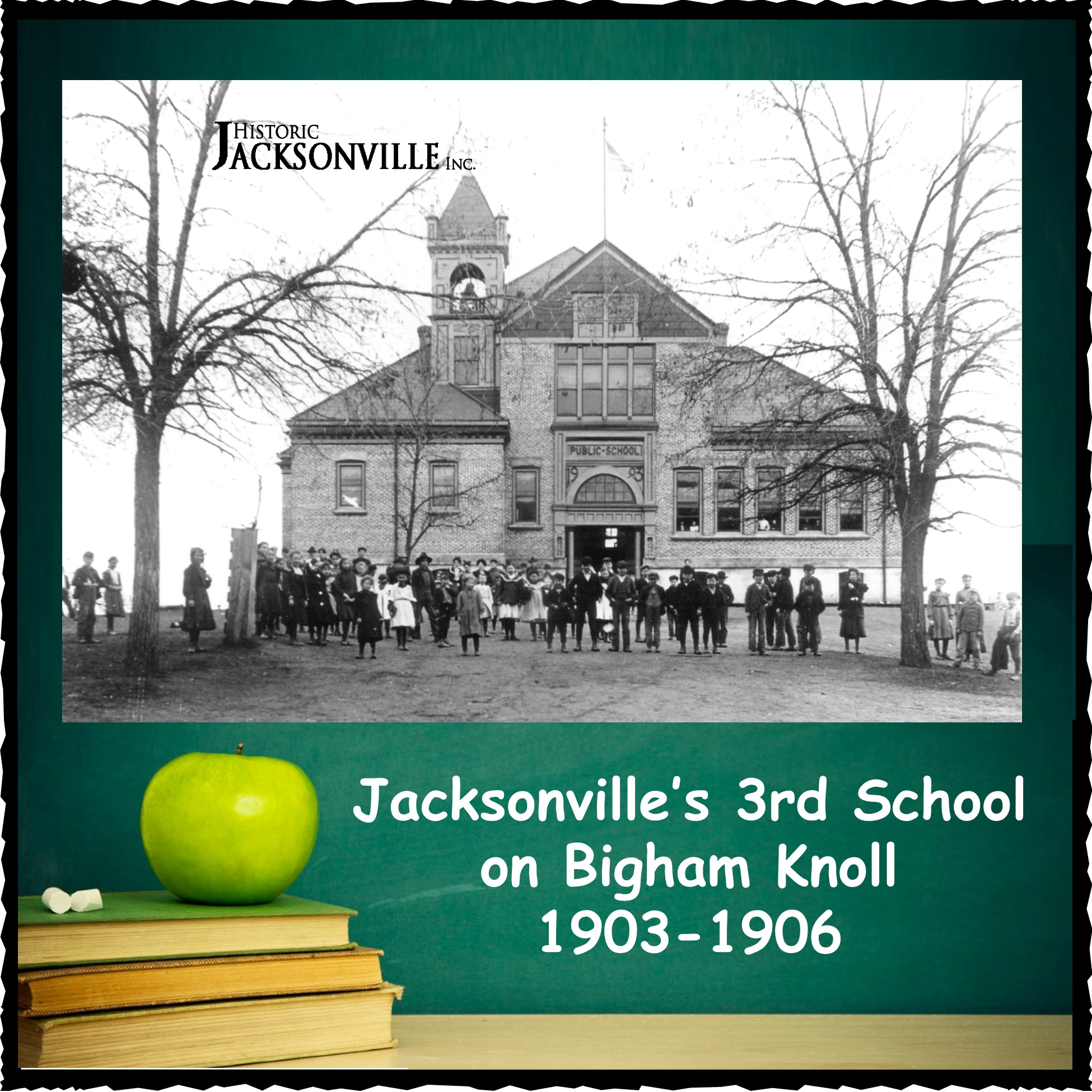
When Jacksonville’s 36-year-old wooden school house on Bigham Knoll burned in January 1903, within a month the School Board made plans to raise a new fire proof brick building. S. Snook, contractor “for so many of the new school buildings of the better class in Oregon,” erected the new 5-room brick structure. However, the best laid plans…. Four years later this “fire proof” brick structure was totally destroyed by fire on December 13, 1906. Even though the building was not fully paid for, the voters quickly approved a bond measure for another school.
Schoolhouse #4
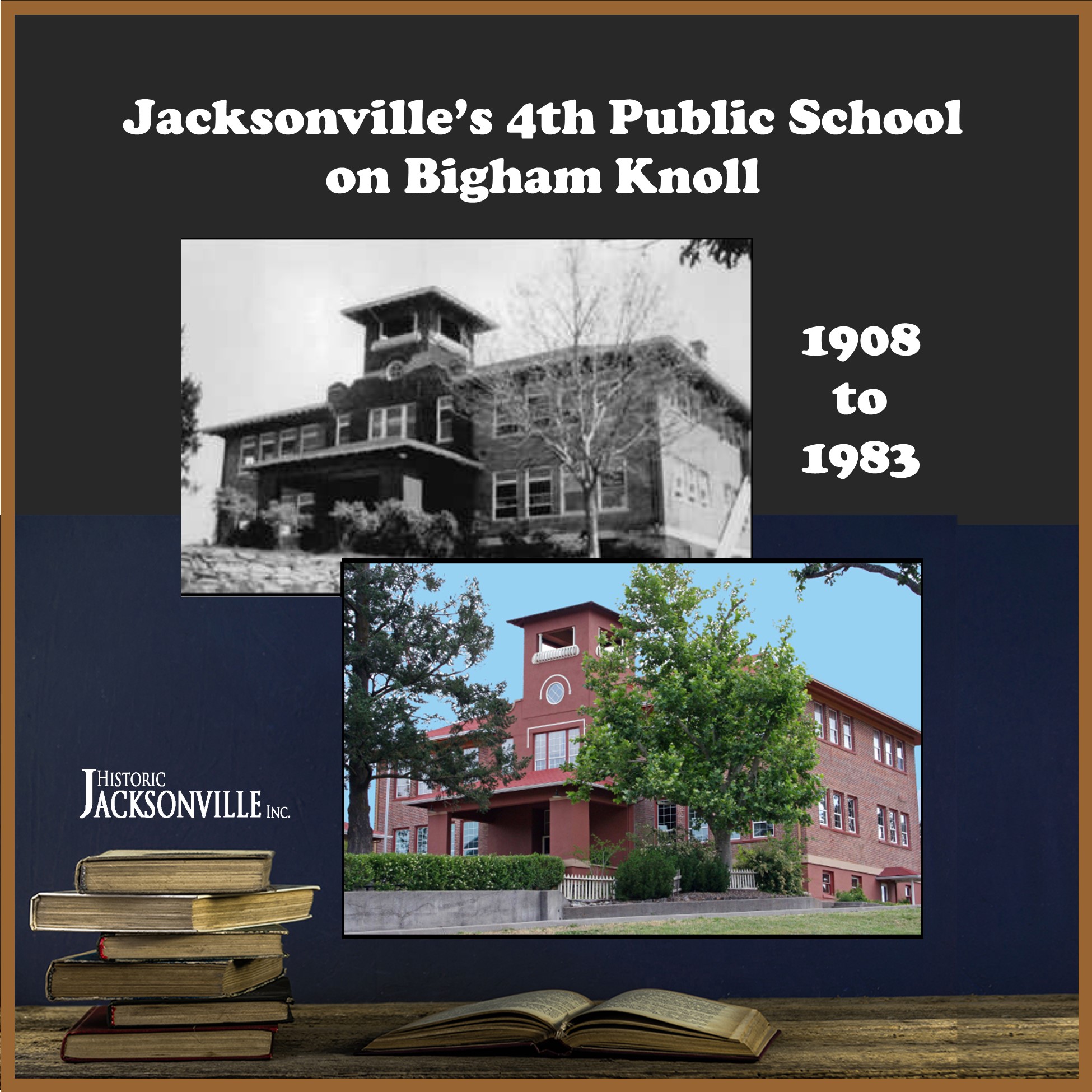
When a December 1906 fire razed the 3rd school to stand on Bigham Knoll, Jacksonville voters immediately approved another school bond issue. The new fire proof brick building, completed in 1908, was acclaimed one of the best appointed schoolhouses in the state with 6 classrooms, a large assembly room with a large stage fitted with electric footlights, and a steam heating plant. A large gymnasium building, additional classrooms, and other outbuildings were added between 1924 and 1953. But by the 1950s the structure had safety issues, and in 1959 the high school was closed, and the second floor of the building blocked off. One year later, the cupola and bell tower were removed. After a new elementary school was constructed in 1983, private schools occupied this structure through 2007 when the property was acquired by the Ashland family for their corporate headquarters. With the goal of maintaining a learning environment for their employees, they have lovingly restored the buildings, recycling original materials and reintroducing many of the distinctive features of the 1908 school.
St. Mary’s Academy – Beekman Square
The cul-de-sac off E. California Street in Jacksonville now known as Beekman Square was originally the site of St. Mary’s School. Established in 1865 by three members of the Sisters of the Holy Names of Jesus and Mary, it operated as a 12-year boarding and day school for the daughters of the more well-to-do pioneer families. It graduated its first student in 1871. St. Mary’s moved to Medford in 1908 and became co-educational in the late 1920s. It’s currently serves middle and high school students.
